Oxford University Press's Blog, page 683
March 30, 2015
Meet the International Law marketing team
We are pleased to introduce the marketing team for International Law at Oxford University Press. Cailin, Jo, Erin, Jeni, Kathleen, and Ciara work with journals, online reference, and books which are key resources for students, scholars, and practitioners worldwide. The OUP portfolio in international law covers international criminal law, international human rights law, international economic and trade law, international environmental law, international humanitarian law, diplomacy, law of territory and statehood, law of the sea, criminal and transitional justice, history of international law, dispute settlement, foreign investment law, and more. Get to know more about the team below and continue following developments from the OUP International Law marketing team on Twitter and Facebook.
Cailin Deery
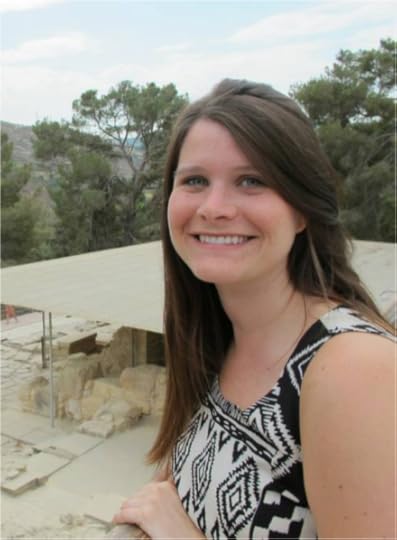
What is your role in OUP’s International Law department?
I am the Marketing Manager of OUP’s international law journals and the leader of our social media strategy group.
What was your background before you started working at OUP?
I was studying literature and sociolinguistics at NC State University with the distant dream of working in publishing as a lexicographer. Thankfully, I had the good fortune to find myself in publishing much earlier than expected – a week after graduation – in Journals Marketing (undoubtedly a better fit for me!). I moved to the United Kingdom four years ago.
Who is your international law inspiration?
I am privileged to work with many inspiring international law academics through my journal editorial boards, so it’s difficult to choose one. I was very fortunate to know and work with Antonio Cassese on the Journal of International Criminal Justice, and he continues to be an inspiration.
What is the most exciting project you have been a part of while working at OUP?
Working with the international law group is truly among the most exciting projects I’ve been a part of at OUP. Working with the editorial boards of new journal launches is also very enjoyable and rewarding, whether the journal is brand new, such as the London Review of International Law or Journal of Law and the Biosciences – or in its early age – such as Journal of International Dispute Settlement or International Journal of Transitional Justice.
How would you sum up your job in three words?
Absorbing, collaborative, and forward-looking.
What is the strangest thing currently on your desk?
Nothing too strange at the moment, though I do have my desk covered with pictures and cards and have a mini lunchtime library accumulating.
What are you reading right now?
I’m finishing Girl in a Band by Kim Gordon, Kim’s memoir of her life leading up to the formation of Sonic Youth through their last show, and spent some of Saturday afternoon dipping into Susan Sontag’s On Photography essays.
Jo Wojtkowski
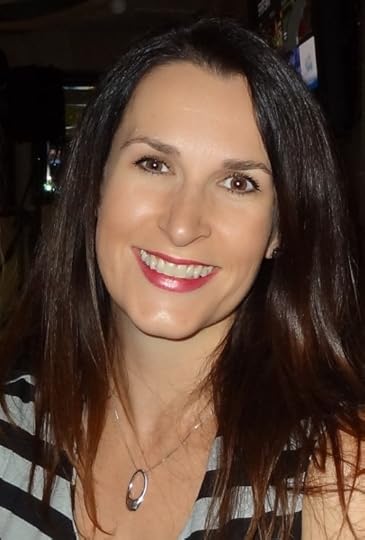 Jo Wojtkowski
Jo WojtkowskiWhat is your role in OUP’s International Law department?
I am the Assistant Marketing Manager for the US Law Division. I work specifically on end-user marketing for our books and online products.
What was your background before you started working at OUP?
Before moving to the United States, I worked for OUP in our UK office, as a Senior Sales Executive and Account Manager for the law department. Prior to OUP, I was a Welfare Manager at an International English Language School based in Oxford, UK.
Who is your international law inspiration?
M. Cherif Bassiouni, often referred to by the media as “The Godfather of International Criminal Law” and a “war crimes expert.” Professor Bassiouni has been appointed to 22 United Nations positions including Chair and then member of the Commission of Inquiry for Libya, and Independent Expert on Human Rights for Afghanistan. He has served as a consultant to the US Department of State and Department of Justice on projects relating to international traffic of drugs, international control of terrorism, the defence of the US hostages in Iran, governance and democracy projects in the Middle East and North Africa, and the future of the Iraqi justice system.
Among the many distinctions, awards and medals he has received are the Nomination for the Nobel Peace Prize (1999); Hague Prize for International Law (2007); World Peace Through Law Award (2010); United Nations Association’s Adlai E. Stevenson Award (1993); and Stockholm Human Rights Award (2013).
I had the pleasure of working with Professor Bassiouni on the release of the Sixth Edition of International Extradition: United States Law and Practice.
What is the most exciting project you have been a part of while working at OUP?
The launch of our International Law Twitter channel: @OUPIntLaw. We started the account back in September 2013, and we now have over 3,000 followers. This was a real collaborative effort, involving many members of the marketing, editorial, and social media departments. Social media is still a relatively new area, so it was exciting to be one of the founding members of this channel.
How would you sum up your job in three words?
Collaborative, creative, diverse.
What is the strangest thing currently on your desk?
A stone-carved trinket box, in the shape of the African continent. One of the countries secretly opens the box. I will not tell you which one…but it begins with K!
What are you reading right now?
The New York Times #1 bestseller, The Kissing Hand by Audrey Penn. I have a four-month-old daughter and this is a bedtime story favorite in our house.
Erin Fegely
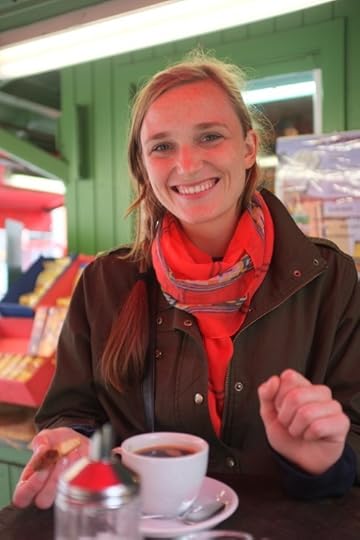 Erin Fegely
Erin FegelyWhat is your role in OUP’s International Law team?
I am a Product Marketer and Brand Manager for a range of Oxford’s digital resources including the family of products on Oxford Public International Law.
What was your background before you started working at OUP?
I started at Oxford directly after graduating from Pennsylvania State University where I double-majored in Public Relations and International Studies with a French minor.
Who is your international law inspiration?
Although not technically a lawyer, I would be remiss not mention our own John Louth, Editor in Chief of Academic Law here at OUP. He is certainly one of my favourite individuals to brainstorm with! Outside of this, there is no one person that I would like to recognize, but I am always drawn to anything in the field of Human Rights and myself take a large interest in the work done to raise awareness of modern day slavery and human trafficking.
What is the most exciting project you have been a part of while working at OUP?
One of my favourite projects that I have been a part of since I started at OUP was the relaunch of Oxford Handbooks Online in the fall of 2012. We completely altered the publishing model and updated all site functionality. It was the first major relaunch I was able to manage and involved a lot of branding work and innovative digital marketing tools, including our first (and award-winning) digital brochure.
How would you sum up your job in three words?
Central communication hub
What is the strangest thing currently on your desk?
A strongly scented geranium (the ‘flavor’ is Attar of Rose) that I am trying very hard to keep alive!
What are you reading right now?
Depending on my mood, I am currently switching between The Circle by Dave Eggers; Bohemians, Bootleggers, Flappers, and Swells: The Best of Early Vanity Fair; and Nicholas Kristof’s A Path Appears.
Jeni Payne
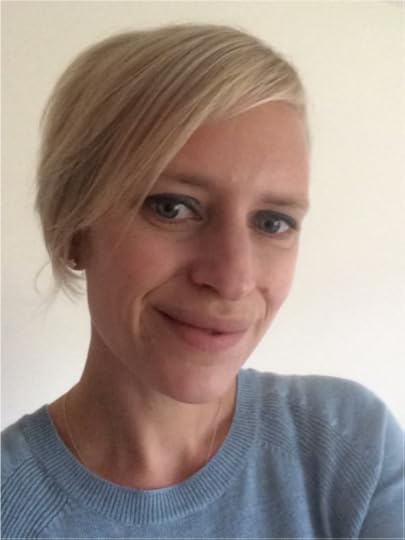 Jeni Payne
Jeni PayneWhat is your role in OUP’s International Law department?
I am the Marketing Manager of UK books for the International Law team.
What was your background before you started working at OUP?
After graduating from Lincoln University with a degree in Journalism and Media, my first job was at OUP as a Marketing Assistant. In 2003 I left to work at Blackwell Publishing where I worked on their nursing products, but five years ago, the opportunity to come back to work at OUP came up and I jumped at the chance.
What is the most exciting project you have been a part of while working at OUP?
To be honest, it is working with the International Law team. It is great to be able to work so closely with colleagues in different departments and countries, and to be part of a team that has the same goals and visions.
How would you sum up your job in three words?
Busy, diverse, and challenging
What is the strangest thing currently on your desk?
A half-chewed bike pedal that had to be replaced after my dog mistook it for a dog toy!
What are you reading right now?
I am re-reading The Day of the Triffids by John Wyndham, which is one of my all-time favourite books.
Kathleen Sargeant
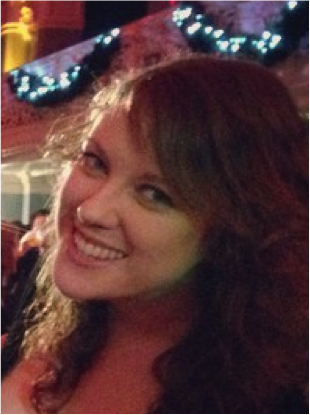 Kathleen Sargeant
Kathleen SargeantWhat was your background before you started working at OUP?
Prior to joining the International Law team at OUP, I was studying English Literature and Modern History at the University of St Andrews.
Who is your international law inspiration?
My international law inspiration is Leora Bilsky, Professor of Law at Tel Aviv University. I find her study of Israeli political trials, and of the Adolf Eichmann trial in particular, fascinating. My MA dissertation considered the role of eyewitness testimony in different aspects of Holocaust studies, and I continue to be captivated by the part that witnesses play in international criminal tribunals.
What is the most exciting project you have been a part of while working at OUP?
I’ve been very lucky to have been involved in the creation and promotion of a number of themed article collections since joining the International Law team. The most exciting of these for me was a collection created in recognition of Human Rights Day 2014. This collection was so interesting because the articles we included covered many aspects of human rights law, and I was given the opportunity to work with some very talented authors during the process.
How would you sum up your job in three words?
Creative, varied, challenging
What is the strangest thing currently on your desk?
I am a huge fan of a decorated desk, and so mine is engulfed in weirdness. But the strangest item currently nestled amongst my myriad of postcards – and one photograph of Michael Redgrave – is a crooked blue elephant that I crocheted a while back. His name is Napoleon.
What are you reading right now?
I find it difficult to focus on one book at a time, probably because, as a student, I was often wading through volumes of poetry, alongside textbooks on the history of medicine, and the complete works of Bertolt Brecht. I am currently reading Sarah Waters’ new novel The Paying Guests, with regular breaks for My Swordhand is Singing (an old favourite) by Marcus Sedgwick.
Ciara O’Connor
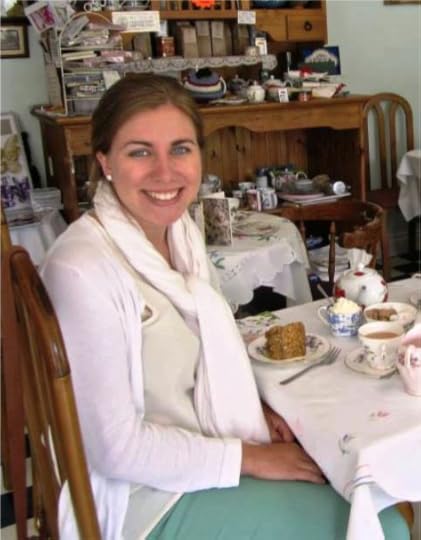 Ciara O’Connor
Ciara O’ConnorWhat is your role in OUP’s International Law department?
I’m a marketing associate for the US law division.
What was your background before you started working at OUP?
This is my first job after graduating from college in 2013. I previously interned with the World Affairs Council of Pittsburgh and at a law firm doing marketing and copywriting.
Who is your international law inspiration?
Yasmine Akbaba, one of my political science professors in college who got me interested in international relations during my freshman year and advised my senior seminar research on international relations and religion. She is a great teacher and mentor.
What is the most exciting project you have been a part of while working at OUP?
I’ve enjoyed preparing for the American Society of International Law’s annual meeting in April. There are a lot of logistics but I’m excited to see everything come together and to highlight our new international law books.
How would you sum up your job in three words?
Unpredictable, fun, and challenging
What is the strangest thing currently on your desk?
Three empty flower vases left behind by the person who used to sit at my desk. She must have been very popular!
What are you reading right now?
The Girl on the Train by Paula Hawkins. I’m about half way through and can’t wait to see how it ends.
Headline image credit: Sky. CC0 via Pixabay.
The post Meet the International Law marketing team appeared first on OUPblog.

Cinderella science
Imagine a plant that grew into a plum pudding, a cricket bat, or even a pair of trousers. Rather than being a magical transformation straight out of Cinderella, these ‘wonderful plants’ were instead to be found in Victorian Britain. Just one of the Fairy-Tales of Science introduced by chemist and journalist John Cargill Brough in his ‘book for youth’ of 1859. These real-world connections and metamorphoses that traced the origins of everyday objects were arguably even more impressive than the fabled conversion of pumpkin to carriage (and back again). That same year, Charles Darwin published his Origin of Species, which in its own way talked of organisms shifting forms over time. The fairy-tale possibilities and resonances of evolutionary theories were often highlighted in the second half of the nineteenth century, as authors drew heavily on such allusions when dealing with Darwin. With natural selection, like a fairy godmother, adapting plants and animals to fit new environments, what better comparison for the transformation of objects and creatures than Cinderella?
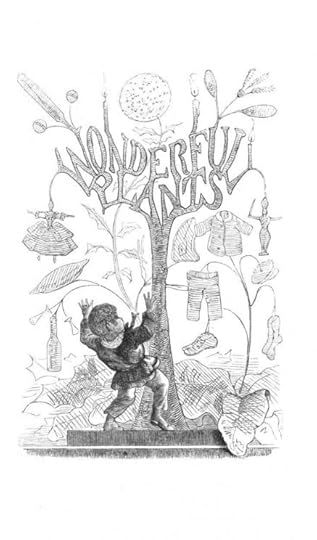 Charles Henry Bennett, ‘Wonderful Plants’, from John Cargill Brough, The Fairy-Tales of Science (1859). Public Domain via Wikimedia Commons.
Charles Henry Bennett, ‘Wonderful Plants’, from John Cargill Brough, The Fairy-Tales of Science (1859). Public Domain via Wikimedia Commons.For ‘Darwin’s bulldog’, Thomas Henry Huxley, science itself was Cinderella, an overlooked step-sibling to Theology and Philosophy, and hard at work in the real world. But others drew more precise comparisons, for both serious and comic effect: for instance, one imagined correspondent to Punch could ‘readily understand’, he wrote in 1879, ‘the pumpkin changed into a carriage, the rats into footmen, and the other arrangements for the Transformation Scene wrought by Cinderella’s scientific godmother’. These were ‘evidently a mythic foreshadowing of some great Darwinian Doctrine of Evolution’, and therefore ‘reasonable enough’. ‘But a slipper of glass!’, he exclaimed, ‘The thing is preposterous.’ Taking issue with the linguistic confusion which had, by the late 1870s, converted the orphan’s footwear from vair to verre, or fur to glass, he demanded accuracy of his fantasy. This act of iconoclasm dared to apply the latest scientific knowledge, as well as new techniques of biblical analysis and close-reading, to the sacred fairy-tale canon.
Other works, such as nursery classic The Water-Babies by Charles Kingsley (1863), wove together observations on natural history and evolutionary theory as the scientific warp to a societal weft in a moral fable, which chronicled Tom’s series of evolving adventures. Rather than a fairy godmother, here maternal teachers introduced Tom to the wonders of nature, and to correct behaviour. Throughout, Kingsley’s avuncular narrator made joking reference to contemporary men of science (including Huxley), but also to the wider spirit of enquiry, ‘Fairy Science’, which they served. In fact, the narrator argued, the ‘most wonderful and the strongest things in the world’ are things, from faith to kindness to forces, which ‘no one can see’; fairies are ‘what makes the world go round’.
However, this very invisibility of evolutionary mechanism also permitted the use of Cinderella figures in arguing against Darwinian doctrine. For example, the veterinarian brothers George and Albert Gresswell’s book describing a Wonderland of Evolution (1884) very explicitly used a fairy godmother to embody the process of ‘Evolution’, pairing her with ‘Chance’. Though its first-person narrator transformed into an evolutionary catalogue of appropriate organisms, beginning with the ‘lowly form’ that represented the origins of life on earth, the purpose of such presentation, revealed in a conclusion, was to ridicule its precepts. They used fairy guides and talking animals to save the phenomenon of divine power, and downplay the role of chance. However, reviewers were not kind to this book, one writing that: ‘It is not at all evident that the authors understand themselves what is the theory of evolution… Their attempt to make fun of it is certainly a distinct failure.’ Combining fairy tales and science had no guarantee of success.
Connections between Cinderella and science have persisted in more recent times: for instance, the very latest techniques in photobotanic technology were employed by John Nash Ott and his researchers in recording time-lapse footage of pumpkin growth to be animated in the 1950 Disney film. With the imminent release of a live-action version of Disney’s Cinderella, many are asking whether its magical transformations could actually happen in the real world. These Victorian authors argued that, through the process of evolution, it already was.
The post Cinderella science appeared first on OUPblog.

March 29, 2015
The Battle of Bayside, Queens: a Q&A
From 1970 to 1975, Bayside Hills—a pleasant and prosperous neighborhood in Northeastern Queens, a borough of New York City—was embroiled in controversy when a local woman named Veronica Lueken announced that the Virgin Mary was appearing to her at St. Robert Bellarmine’s Church. At first Lueken was regarded as a “local kook.” Then, in 1973, a traditionalist Catholic group from Canada called The Pilgrims of St. Michael declared her “the seer of the age” and pilgrims started to flock to Bayside Hills. They came to see Lueken go into ecstasy and deliver “messages from heaven” transmitted by Mary, Jesus, and a host of saints.
Eventually, Lueken’s vigils drew throngs of up to two thousand people. This created a serious problem for Bayside Hills. At the prompting of the Bayside Hills Civic Association (BHCA), a representative of the Diocese of Brooklyn wrote Lueken a letter asking her to stop the disruptions to the community. But Lueken insisted that heaven had called her to St. Robert Bellarmine’s and that the vigils could not be relocated. This resistance led to a series of escalations that came to be remembered as “The Battle of Bayside.”
Kevin J. Farrelly grew up in Bayside Hills and personally witnessed the Battle of Bayside. Farrelly, who graduated from Robert Bellarmine’s elementary school, was an undergraduate at Columbia University when Lueken’s group was forming. Today, he is a Manhattan lawyer and in the 1990s served as president of the Bayside Hills Civic Association. I sat down with him to discuss this unusual chapter of American Catholic history from an eyewitness perspective.
You’ve described inviting friends to come watch the vigils during the 1970s. Can you describe what it was like to be in Bayside Hills while a vigil was going on?
The early vigils typically consisted only of Lueken and a few other people, usually women. They knelt on the lawn near the statue of Mary on the grounds of what had recently become the former church of St. Robert Bellarmine Parish. In the spring of 1970, a new church building was opened a block away. The former church would eventually become the parish gymnasium.
In those early years, Lueken was considered a neighborhood oddity. I do not recall that her activities were particularly disruptive during that period. Things changed dramatically, however, when she affiliated with the Canadian group. Soon, hundreds of people regularly began attending the vigils, which were held every Sunday afternoon and usually one evening a week, on days which Lueken’s group considered holy. What had been a mere neighborhood oddity soon grew into a major public nuisance, with scores of people crowding onto the old church lawn, sidewalks, and streets, with their buses parking in front of the houses in Bayside Hills.
St. Robert’s eventually removed the statue of Mary and erected a fence to keep people off the lawn near the old church. Interestingly, only a few years before, my sister Patricia, while she was a student at St. Robert’s, had placed a floral wreath on that statue’s head during a May crowning ceremony. When the church property was denied them, Lueken and the vigil group (we never called them “Baysiders” then) took to the grassy malls on 56th Avenue, which ran alongside the old church. Eventually the police insisted that the buses unload their passengers near Queensboro Community College, about a half mile from St. Robert’s. I can still vividly recall the dramatic sight as the vigil people marched in a procession from the College. At the head of the procession, men carried their own statue of Mary, bedecked with a gleaming gold crown and a bright blue cape.
Bayside Hills was then, and remains today, a quiet, bucolic residential community with little vehicular traffic on its streets and avenues. When vigils were held, throngs of people, some of whom used the bushes in front of houses to relieve themselves, disturbed the peaceful atmosphere. There were also reports that vigil people would chastise neighborhood girls for what they considered to be immodest attire. Soon, residents took to the sidewalks along the malls to protest the vigils.
You’ve also described wanting to write a paper on the vigils at Columbia. When did you first suspect that what you were seeing had historical significance? And why did your professor discourage writing on the topic?
I was a political science major at Columbia University while the vigils were at their height. I commuted to Columbia from my home in Bayside Hills, so I was often present when the vigils were conducted. One of my academic interests was participation by the citizenry in community affairs. I remember reading The Semi-Sovereign People by E. E. Schattschneider and Who Governs? by Robert Dahl. Today, Robert Putnam’s Bowling Alone would be relevant to this area of study. I thought the battle between the BHCA and Lueken’s group provided an excellent case study in community participation. The battle involved neighborhood, political, legal, and religious issues. Unfortunately, my seminar professor did not agree with me and dissuaded me from writing a paper on the vigils. He did not consider the matter worthy of study. Perhaps I did not sell the idea to him adequately. I am delighted that your book finally provides such an exhaustive and well-written treatment of the subject. Your access to the files of the Brooklyn Diocese and Lueken’s group provide perspectives that were not widely known during the vigils.
The BHCA said the pilgrims were extremely disruptive. Lueken’s followers claim they were being unfairly persecuted. As an eye-witness, what is your assessment of these claims?
The vigils were extremely disruptive for a quiet residential community such as Bayside Hills. It is not an area like midtown Manhattan where group demonstrations are common. There was also a feeling that Luken’s group was improperly using the grassy malls, which were then maintained by BHCA volunteers. These are not cement traffic islands. They are wide grassy malls that the developer in the 1930s installed on some of the avenues and streets to give Bayside Hills a distinctive appearance. The malls, in fact, belong to the City of New York but the City long ago stopped maintaining them. When the malls became overgrown due to lack of maintenance in the 1960s, the BHCA took on the job of maintaining them, first by volunteers and later by gardeners paid by the BHCA. As a result, residents have always taken great pride in the malls. Since the residents themselves rarely, if ever, congregated on the malls, they resented outsiders who claimed the malls for their own purposes. The vigil people also spilled out onto the avenue and sidewalks. The Bayside Hills residents felt they were being forced to accept a public nuisance and argued that the vigils would not have been permitted on major roads such as Queens Boulevard or the Long Island Expressway.
Lueken said that Mary had ordered a “basilica” to be erected at St Robert Bellarmine’s. Can you talk about why the prospect of building a basilica was particularly threatening to the BHCA?
A basilica on the grounds of St. Robert’s would be completely out of character in such a quiet residential community. Most importantly, it would have been a drastic change for the homeowners who made a decision to invest in that quiet community. Aside from not wanting the crowds, the noise, and the buses on their quiet streets, the residents feared property values would suffer if the vigils were allowed to continue and a basilica was constructed.
In 1995, you organized an event to commemorate the twentieth anniversary of the Battle of Bayside. Can you describe this event and explain why you felt it was important?
In the history of the BHCA, the vigils were one of its most defining moments. It was an issue that caught fire with the residents and caused many of them to come out of their homes and vocally defend their community. In quieter times, it was difficult to motivate residents to actively participate, although the BHCA has always held a strong dues-paying membership (courtesy of the BHCA’s protection and maintenance of the malls). Because I had been an eyewitness to the vigils in the 1970s and the BHCA President some 20 years later, I thought it appropriate to host a retrospective. I invited some of the key participants such as William Caulfield and Donald Kiley to speak. David Oates, an editor of the Queens Tribune, showed a (silent) home movie that had been made during the vigils. Many of the residents who attended the retrospective lived in the Hills during the vigils. Today, there are very few Bayside Hills residents who personally witnessed the vigils.
In 1999, the Queens Tribune listed Veronica Lueken as number 17 on a list of worst people ever to have lived in Queens. Can you provide any context as to why Lueken was so reviled in Queens?
Of course, Lueken should not be likened to murderers and rapists. But for the residents of Bayside Hills who lived through the vigils, she will always be thought of as a fraud who tried to make money from the vigils. Furthermore, a majority of Bayside Hills residents in those days were Roman Catholic and members of St. Robert’s Parish. The BHCA’s attorney and three leaders—Al Falloni, Joe Fristachi, and Bill Caulfield—were all Catholic. Once the Church officially disavowed Lueken, the Catholic residents felt justified in seeking an end to the vigils. Of course, many residents were not Catholic and presumably were not influenced by the Church’s position. In your book, you argue that, compared to other persons who claim to have saintly visions, Lueken was not treated fairly by the Church. We will never know how the BHCA would have reacted had the Church sanctioned Lueken’s claims.
Veronica Lueken has been variously called a saint, a mentally ill person, and a fraud. What do you think was motivating her to organize these vigils in Bayside Hills?
Most Bayside Hills residents believed Lueken was a fraud who sought fame and fortune. I have no way of assessing her mental capacity. Your book reveals that Lueken and her followers believed the person claiming to be Pope Paul VI was an imposter. Was this because they were irrational or because this wild claim supported their political agenda? One could ask the same question of Americans who continue to insist that President Obama was born outside the United States.
Image Credit: “Our Lady is Raised Up” by Lawrence OP. CC BY-NC-ND 2.0 via Flickr.
The post The Battle of Bayside, Queens: a Q&A appeared first on OUPblog.

The causes and consequences of the 2011 London riots
During the London riots in August 2011, the police lost control of parts of the city for four days, and thousands of people took part in destruction and looting that resulted in property damage estimated at least $50 million. A recent article in Social Forces examines the residential address of 1,620 rioters — who were arrested and charged in the London riots, to investigate potential explanations for rioting. I spoke with one of the authors, Michael Biggs, to further understand his findings, and whether they confirm or alter previous understandings of rioter motivation.
* * * * *
1. Can you briefly tell us what the London riot of 2011 was and why it occurred?
It began during a protest against the police shooting of a young man of mixed race, Mark Duggin. Rioting quickly spread across several London boroughs. For four nights, the police lost control of last swathes of the capital city. Other English cities also experienced riots on a smaller scale. Why the riot occurred is disputed by scholars and politicians. According to some, the rioters were motivated by anger against brutal treatment by the police, along with grievances against rising inequality and cuts to public services. Other argue that the motivation was not protest but crime, as rioters exploited an unprecedented opportunity to steal consumer goods.
2. How do you know who rioted?
Fortunately for sociology, but unfortunately for the rioters, the police conducted a massive investigation in the months afterwards. In Britain, closed circuit television cameras are everywhere, and these were used to identify participants. The police kindly shared their data on 1,600 individuals who were arrested and subsequently charged with a criminal offense. Of course we didn’t have access to names or other personal information, but all we needed was the postcode of the individual’s residence. British postcodes are exceptionally detailed, and so we could match them with information from the Census, which provides comprehensive information on 25,000 neighborhoods in London. Our analysis looks at geographical variation within the city. We compare (a) neighborhoods where at least one rioter lived with (b) neighborhoods without rioters.
3. How does your study confirm earlier studies of riots and in what ways does your study change our understanding of riots?
Our study is the first to provide rigorous evidence for the importance of police legitimacy. Many riots, like this one, are triggered by an incident involving perceived police brutality. But such a triggering incident could just be a pretext. Surveys conducted after riots in the United States have shown that rioters have worse experiences with the police than individuals who didn’t participate. But attitudes expressed afterwards could be a consequence of taking part in the riot and rather than a cause. Our study, by contrast, measures police legitimacy from surveys conducted before the riot, which sampled the entire population. We show that rioters were more likely to come from areas where people didn’t feel that the police treated them with respect. This finding holds even after taking into account many other social, economic, and political factors.
 Carpetright store after Tottenham riots by Alan Stanton. CC BY-SA 2.0 via Wikimedia Commons.
Carpetright store after Tottenham riots by Alan Stanton. CC BY-SA 2.0 via Wikimedia Commons.We challenge the accepted sociological wisdom that rioting is not associated with poverty. In London, rioters tended to come from the poorest neighborhoods, as measured by unemployment, adults lacking educational qualifications, workers in the lowest-paid occupations, overcrowded housing, and so on. How do we reconcile this finding with studies of American riots in the 1960s, which reject poverty as an explanation? Most of the analyses considered variation among cities, rather than variation within a city. In addition, in the United States at that period, black people were overwhelmingly poor, which makes poverty and ethnicity very hard to disentangle.
4. What did you conclude from your study as to why the London riot took place in some areas of London but not in others?
Overall, three major factors explain geographical variation. First, rioters came from areas where people felt less respected by the police. Second, they came from poor neighborhoods. Third, rioters came from neighborhoods which were ethnically diverse or “fractionalized.” Don’t make the mistake of thinking that diversity is just another word for nonwhite — we are measuring whether people in the neighborhood are drawn from many different ethnic groups rather than one. This last finding surprised us. We interpret it in terms of social cohesion: more diverse neighborhoods are less cohesive, and so adults are less able to prevent youth from rioting. This interpretation is supported by the fact that rioters were less likely to come from areas with many charitable (or nonprofit) organizations, which is another measure of social cohesion.
5. What, if anything, does your study say to those who claim that there are “no-go” zones in London, where the police cede their authority to residents?
London doesn’t have “no go” zones. American cities have ghettos, where most residents are black and poor. London doesn’t have similar spatial concentrations of class and ethnicity. Police in Britain don’t routinely carry firearms and only a few criminals are armed. This means that relations between police and civilians aren’t fraught with violence. So while we find that variations in police legitimacy across London help to explain rioting, these were variations around a relatively high level of legitimacy.
6. What, if any, are the similarities and differences between the London riot and the recent riots in Ferguson, Missouri in the United States?
The riots in Ferguson also began with protest against the shooting of a young man by the police. But these riots manifested a stark racial divide: the rioters were almost entirely African American. In this sense, the Ferguson riots resembled the riots of the 1960s, though on a smaller scale. By contrast, the London riot was exceptionally multiethnic. Some ethnic groups were overrepresented among the rioters, like people of Caribbean descent. But no single group was in the majority. This makes the London riot especially intriguing for sociologists.
Heading image: Shop fire during London riots, 2011 by Andy Armstrong. CC BY-SA 2.0 via Wikimedia Commons.
The post The causes and consequences of the 2011 London riots appeared first on OUPblog.

Is chocolate better than exercise for the brain?
Everyone knows that aerobic exercise is good for the body, but is it always as good for brain? Furthermore, is exercise better than eating lots of chocolate for the aging brain? A recent study published in the journal Nature Neuroscience by a group of scientists from Columbia University and NYU gave a large daily dose of flavanols extracted from cocoa powder to a small number of 50 to 69 year old subjects; they reported improved memory and enhanced blood flow in a part of the brain, the hippocampus, that is responsible for memory formation. If this sounds too good to be true, it probably is.
Two things about this study are disturbing and tend to undermine my confidence in their results. First, the older people didn’t benefit at all from exercising. This finding is not only inconsistent with the broad literature on this topic but is also a surprising failure by these scientists to replicate their own previous findings. Second, the supposed health benefits of cocoa flavanols have been extensively investigated in both humans and animals and consistently found to produce no real health benefits. Both the US FDA and European Food Safety Authority have refused to approve any health claims made about these chemicals.
Chocolate is an excellent example of how difficult it is to differentiate food from drug. The cocoa powder used to produce chocolate is rich in flavanols and many other potentially psychoactive chemicals. Although the amount and types of flavanols depend on how the cocoa powder was processed and manufactured, the powder produced may contain up to 10% its weight in flavanols. Overall, chocolate is not a great source of these flavanols. While expensive dark chocolate may contain anywhere from 45-80% cocoa powder, the chocolate found in the average candy bar has only about 5-7% cocoa powder.
So how much chocolate would a person need to eat in order to achieve the results reported in this study? The subjects in this study consumed a specially prepared commercial product that contained about one gram of flavanols every day for three months. One hundred grams of cocoa powder usually contains about 100 milligrams of flavanols. These values suggest that you would need to eat about one kilogram of pure unrefined cocoa powder or about 44 pounds of chocolate candy every day! Therefore, in spite of the hype surrounding this report in the popular press, I would not recommend that anyone attempt to replicate this study at home.
Headline image credit: Compound Chocolate. Uploaded by SKopp. CC BY-SA 3.0 via Wikipedia.
The post Is chocolate better than exercise for the brain? appeared first on OUPblog.

Women in Philosophy: A reading list
To celebrate Women in Philosophy as part of Women’s History Month, we have created a reading list of books, journals, and online resources that explore significant female philosophers and feminist philosophy in general. Recommendations range from general interest books to biographies to advanced reader books and more.
You can visit our Women in Philosophy page for more book recommendations and access to online resources and articles.
Autonomy, Oppression, and Gender, edited by Andrea Veltman and Mark Piper
This is an extraordinary book for any student interested in feminist philosophy and autonomy. It is a collection of essays that examine philosophical issues at the intersection of feminism and autonomy studies. Are autonomy and independence useful goals for women and subordinate persons? Is autonomy possible in contexts of social subordination? Is the pursuit of desires that issue from patriarchal norms consistent with autonomous agency? The contributors answer all these questions and more.
Exploring Philosophy: An Introductory Anthology, Fifth Edition, by Steven M. Cahn 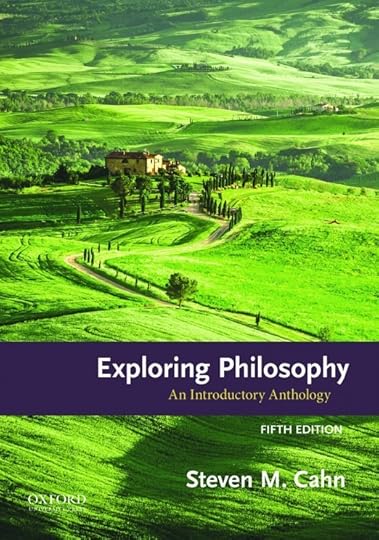
In this latest edition, Steven Cahn dramatically increased the number of readings in the book that were authored or coauthored by top female philosophers. This edition includes essays from the late Philippa Foot, Susan Wolf, Anne Minas, and many more. While most other introductory philosophy anthologies contain fewer than five articles authored by women, this book now contains more than thirty.
Iris Murdoch, Philosopher, by Justin Broackes
This book focuses on the life of the influential female philosopher, Iris Murdoch (1919-1999). She is best known for her novels about good and evil, sexual relationships, morality, and the power of the unconscious. She made a huge impact on the field of moral philosophy with her book The Sovereignty of Good. Iris Murdoch, Philosopher incorporates essays from Murdoch’s proponents and opponents to fully explore her life in philosophy.
Feminism: A Very Short Introduction, by Margaret Walters
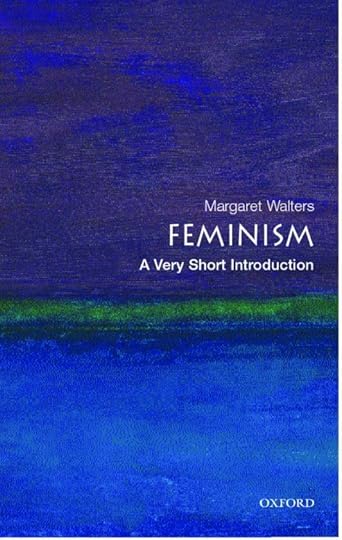
This very short introduction is ideal for those who don’t have a clear foundation on the concept of feminism. This book gives a historical account of feminism, from the initial movement to the right to vote, the 1960’s-70’s liberation, and more. This book also challenges the ideas of feminism in non-western societies and what the future holds for feminism.
Simone de Beauvoir: The Making of an Intellectual Woman, by Toril Moi
This book is more than just a biography of Simone de Beauvoir, one of the greatest modern female philosophers. Toril Moi’s book analyzes de Beauvoir’s life, particularly her seminal publication The Second Sex, from a literary, feminist, historical, and social perspective. De Bauvoir’s infamous love letters to Jacques-Laurent Bost and Nelson Algren are also discussed.
‘Feminist Philosophy and Education,’ from The Oxford Handbook of Philosophy of Education
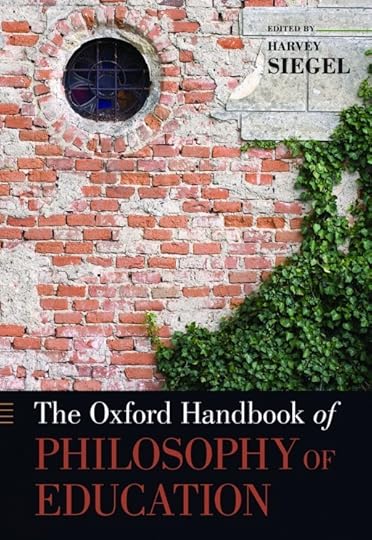
This chapter examines a feminist approach to education. The chapter starts with a section on women’s oppression and discusses the history of oppression and how it is applied to philosophy and education. The next section focuses on women’s agency and how in philosophy it is usually used in a way to approach social problems like care and value ethics. Critiques and applications of feminism in education is discussed in the final section.
The Concept of a Feminist Bioethics, by Mary C. Rawlinson, published by The Journal of Medicine & Philosophy in 2001, discusses how feminist bioethics challenge the study of bioethics by addressing how the masculine characteristics are seen as the generic human subject. The author also suggests that women’s experience and women’s bodies might contribute to a better foundation of basic ethical concepts.
Catharine Trotter Cockburn’s Defense of Locke, by Jessica Gordon-Roth, published in The Monist in 2015, discusses Trotter’s treatment of Locke’s metaphysical ideas. Primarily, Gordon-Roth focuses on the objection that Locke has not proved that the soul is immortal and that the idea of an immortal soul leads to a soul that is always in flux.
You can also learn more about the philosopher Hannah Arendt via the American National Biography Online. Arendt was a German political theorist and philosopher who lived from 1906-1975. Many of her philosophical ideologies were shaped by her experiences escaping Europe as the Nazi’s took over in Germany. She is best known for her works, The Origins of Totalitarianism, The Human Condition, Men in Dark Times, On Revolution, On Violence, and The Life of the Mind.
Feature Image: Library Sky Birds, Mystical Clouds, by Bonnybbx. CC0 Public Domain via Pixabay.
The post Women in Philosophy: A reading list appeared first on OUPblog.

March 28, 2015
Where does the word cyber come from?
Does the word cyber sound dated to you? Like the phrases Information Superhighway and surfing the Web, something about the word calls one back to the early era of the Internet, not unlike when you ask a person for a URL and they start to read off, ‘H-t-t-p, colon, forward slash…’
But for every quaint use of the term (think of cybermall or cyberbabe), there are plenty of uses that come across as perfectly acceptable, such as cybersecurity or cybercrime. If you have any doubts about the continuing cultural relevance of cyber, consider that this week sees the debut of the fourth spin-off of the American television series CSI, titled CSI: Cyber. But where does that elusive ‘cyber’ come from anyway?
Cybernetics
Before there was cyber-anything, there was the field of cybernetics. Pioneered in the late 1940s by a group of specialists in fields ranging from biology to engineering to social sciences, cybernetics was concerned with the study of communication and control systems in living beings and machines. The interest in how systems work is reflected in the etymology of cybernetic, which comes from the Greek word kubernētēs (κυβερνᾶν), ‘steersman’, from kubernan ‘to steer’.
The role played by cybernetics in the growing fields of computer science, biology, and engineering provided the term ‘cybernetic’ a futuristic sheen. It soon became apparent that the shortened combining form cyber- offered people perfect fodder for nonce formations. Starting in the 1960s and continuing into the 1990s, the English language saw a proliferation of temporary or nonce words based on cyber, including cybercubicle, cyberfriend, cyberlover, cybersnob, and even adverbs like cyber-sheepishly. The most lasting word creation of the 1960s, though, was certainly cyborg, which, combining the cyb- of cybernetics with the org- or organism, referred to a man-machine being with the capability of self-adapting to new environments.
Even though the term cyborg originated in a scientific publication, the concept quickly became the province of science fiction; the appearance of cyborg-inspired cybermen on the television show Dr. Who by 1966 and in Martin Caidin’s 1972 novel Cyborg served as the inspiration of the television shows The Six Million Dollar Man and The Bionic Woman.
Cyberspace
Even though cyber- had been attaching itself to other words for more than two decades already, the term cyberspace only appeared in 1982, apparently coined by William Gibson in his science fiction novella ‘Burning Chrome’. According to its Oxford English Dictionary (OED) entry, cyberspace is ‘the space of virtual reality; the notional environment within which electronic communication (esp. via the Internet) occurs.’ Although other cyber- formations cropped up, including cyberworld, cyberland, Cyberia (punningly after Siberia), and cybersphere (which is actually attested to earlier than cyberspace), cyberspace remains by far the most popular cyber- term used to refer more broadly to the world of electronic communications, although its popularity peaked in the late 1990s
The emergence of e- and cyber’s negative side
Although cyber- once had a lock on word formations relating to the Internet and new technology, everything changed with the rise of e- in the 1990s and 2000s. Spearheaded by the now-ubiquitous email, the combining form e- has assumed cyber’s highly productive spot in tech word formation, even supplanting previous cyber formations with its own versions. For instance, you probably won’t hear websites batting around the term cybercommerce any longer; they are far likelier to discuss e-commerce or e-currency.
Despite the rise of e- formations, e- has not made much of a dent in forming words that relate to the more negative aspects of the Internet. Terms like cyberwar, cyberattack, cybercrime, cyberterrorism, and cyberbullying are more prominent than ever. This may be due to the clearer distinction offered by the term cyberwar versus a formation like e-war, which does not offer the same clarity. News stories like the 2014 hacking of Sony (subsequently connected to North Korea), the recent theft by cybercrooks of $1 billion from 30 different banks worldwide, and cases of bullying and harassment over digital devices and social networks have only heightened the attention paid to these terms.
Given the rise in cybercrimes, it should come as a surprise to no one that CSI is jumping on the boat, which may in fact only elevate the negative connotations of cyber. While in some cases cyber may sound a bit old-fashioned, when associated with digital wrongdoings, it sounds anything but irrelevant.
A version of this blog post first appeared on the OxfordWords blog.
Image Credit: “Virus” by Yuri Samoilov. CC by 2.0 via Flickr.
The post Where does the word cyber come from? appeared first on OUPblog.

Collecting and evaluating data on social programs
On 31 December 2014, Ron Haskins of the Brookings Institution wrote a compelling op-ed piece in the New York Times entitled, “Social Programs That Work.” Haskins shared the need for our nation to support evidence-based social programs and abandon those that show small or un-enduring effects – a wise idea.
But one of the greatest challenges to identifying successful programs resides with existing programs’ capacity to collect and evaluate relevant data. Many smaller programs or those that aren’t optimally funded (and who really is “optimally funded” these days?) don’t have adequate systems in place to gather or analyze the information needed to determine the degree to which their programs meet stated goals. The result is that many programs that may be highly effective don’t have the opportunity to demonstrate that effectiveness. To add to this situation, the popular statistical software that is necessary to evaluate program data is often a budget-buster, but not having this critical tool can make or break a program’s ability to determine efficacy.
Now, imagine that you are the director of a social service agency. The economy is bad and the demands you face are great. Are you more likely to purchase a one-year license for statistical software or add more services? Not surprisingly, evaluations of social programs are often pushed by the wayside in favor of staffing programs and providing services.
One way around this dilemma is to train program administrators and evaluators to use R, a free open-source statistical programming language that can be used in place of expensive brand-named statistical software, such as SPSS.
R is an offshoot of a product developed at Bell Laboratories, and is currently maintained by collaborators, mostly academics, from all over the world. Virtually anything you would want to know or learn about it is freely available. Not only can you download R and its accompanying packages from www.r-project.org, but you can also get started there with downloadable manuals, a refereed journal, and a list of recommended books. A recent search on YouTube with the search criteria of “R + statistics” yielded 381,000 results. In the spirit of things being freely available, top-notch universities including Harvard, UC Berkley, and Johns Hopkins are offering classes on R via massive open online courses such as Coursera and edX. R is growing in popularity in a number of fields, including social services.
In contrast, SPSS (owned by IBM) is probably the most popular proprietary statistical software available and is far from cheap. The base package for an individual license is $2,530 for the first year and $5,760 per year thereafter — with no bells or whistles. The high-end version begins at $7,590 for the first year and is then $17,300 thereafter. If you want that version with multiple users on a network, that will cost you $19,000 for the first year and $43,100 each year thereafter. That is, unless the prices go up (because you know they’re not going down).
R is one tool that is accessible to everyone with a computer and an Internet connection. Programs whose staff have learned to use this are one step closer to being able to affordably evaluate the work they do. This is important to all of us who are invested in identifying effective social programs.
As professors, we and our colleagues have picked up on this, and an increasing number of social work programs are teaching students to use R in the hopes that, as students graduate and go into the field, they can build research capacity in the agencies in which they work. We recognize that this will take some time, but we believe it is well worth the effort.
Headline image credit: Office worker. CC0 via Pixabay.
The post Collecting and evaluating data on social programs appeared first on OUPblog.

What kind of Prime Minister would Miliband make?
Not that many people are prepared to go into bat for Ed Miliband. But if they do, they almost always make the following observation.
Ed spent a year-and-a-half in the Cabinet between 2008 and 2010, and spent more than five years working as an advisor in the Treasury before he entered parliament in 2005. If he does become Prime Minister after May 7th, then, he will start the job with far more familiarity with government at the highest level than some of his recent predecessors, not least Tony Blair and David Cameron.
Ed’s defenders will also note that, behind the scenes, that wise old bird, Lord Falconer, has been spending serious time working out exactly how Number Ten is going to be run if and when Ed eventually gets there.
So do they have a point? Are experience and preparation really the keys to governing successfully? Or might Ed Miliband possess shortcomings and limitations that no amount of Whitehall nous and careful planning can overcome?
Anyone who talks to those who worked with, near or under Ed, whether in or out of government, soon gets used to being told it can be far more difficult than it should be to get a decision out of him.
Undoubtedly, some of those who complain are actually complaining about the fact that, because Ed ‘does detail’ and isn’t afraid to question common wisdom, any delay in getting stuff signed off has as much to do with the inadequacy of their case, or the way they’ve presented it, as it does with any ‘chronic indecision’ on his part.
That said, tales of the latter are so widespread that it’s hard to believe that there isn’t at least a grain of truth in there somewhere.
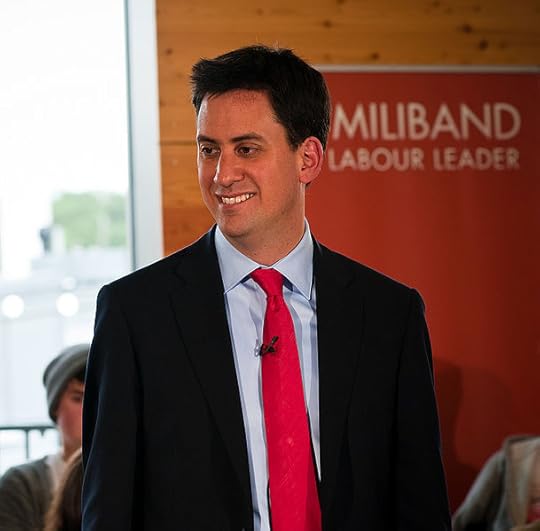 Ed Miliband, August 2010. CC-BY-2.0 via Wikimedia Commons.
Ed Miliband, August 2010. CC-BY-2.0 via Wikimedia Commons.The same goes for another frequent moan about Miliband by those who know him well – namely that, while he continually consults others, he’s often totally convinced that he knows best, meaning that he’s prone to spend an awful lot of time listening without really hearing.
And then there’s his tendency, as some see it, to surround himself with a self-cancelling mix of bold blue-sky thinkers, on the one hand, and depressingly cautious campaigners and uninspiring old-hands on the other.
Always remember, say some who’ve seen Ed operate at first-hand, that this is a guy who grew up under Gordon Brown – a guy who, for all his denials, is no less anxious than Brown was about what the papers are saying, who almost relishes a crisis because that is when many people think he is at his best, who, if truth be told, only really values the opinion of insiders rather than outsiders, tired old-pros rather than genuine insurgents. And you only have to look at Brown, their argument runs, to see that simply knowing one’s way around the corridors of power means nothing if you don’t have the skill-set – or the temperament – to make the most of that power when your moment finally comes.
Such criticisms may, though, be overly-harsh and presumptive.
For one thing, Brown seemed to have done surprisingly little detailed preparation before he moved into Number Ten – something which, thanks to Charlie Falconer, and a whole host of pro bono management consultants and various shadow teams, can’t be said of Labour under Ed.
For another, Ed has other qualities that may help make him a better Prime Minister than many imagine. What he sees, for instance, as ‘intellectual self-confidence’ (and others see as good old-fashioned arrogance) means he is capable of sticking to his guns and seeing things through rather than being blown off course by the slightest side- or head-wind.
Somewhat paradoxically, Ed is also – relatively-speaking anyway – an emotionally intelligent politician, meaning that he may be better able than some previous occupants of Number Ten to manage relationships with colleagues and supporters, both in and outside parliament.
Who knows whether these qualities, when weighed against any shortcomings, will be enough to ensure that Ed Miliband can successfully negotiate the myriad challenges that a Labour government – especially one still wanting to do so much at a time when there is so little money – will inevitably face?
Certainly there are some, even within the Party itself – particularly those who have never once wavered in their belief that five years ago Labour elected the wrong brother – who have long since convinced themselves (and who never waste a chance to try to convince others) that, even if by some miracle Ed makes it to Downing Street, he is bound to make a complete hash of things.
Not everybody, however, is quite so pessimistic. Indeed, even some of those sadly willing to admit that Miliband is hardly the perfect candidate haven’t entirely given up on the possibility that he may yet surprise everyone should he get to be PM.
In spite of the best efforts of his many detractors, not least those in the press and in CCHQ, it may not be very long before we all get the chance to find out.
Feature image credit: Ed Miliband, Leaders Live, by Harry Hitchens. CCO public domain via Wikimedia Commons.
This article was originally posted on Westminster Policy Institute on March 6, 2015.
The post What kind of Prime Minister would Miliband make? appeared first on OUPblog.

March 27, 2015
Fatherhood and mental health
When people think about depressed parents, it’s almost instinctive to think about post-partum moms. Certainly, post-partum depression is a serious issue, but my co-author Garrett Pace and I wanted to go one step further. We asked if moms and dads are at similar risk for depression based on the kinds of parental roles they take on (like a step-parent or residential biological parent). Our work, which appeared in the journal Social Work, found some interesting gender differences. For example, stepfathers have a high risk for depression, particularly if they have a biological child from another relationship who they are not currently living with. Depression for stepfathers is even more likely when they have a child with their new partner, a so-called “cement child.” As we have spoken to reporters, colleagues, students, friends, and others about our findings, we almost invariably get asked this question: “Do dads get depressed, too?”
The answer is an unequivocal yes. Unfortunately, however, the stereotype persists that depression is only a women’s problem (see, for example, this recent blog post by a medical professor). Depression in men and fathers is a serious issue, one that is worthy of consideration by both scholars and mental health professionals. The National Institutes for Mental Health (NIMH) recently estimated that 10% of men and 12-15% of fathers would experience clinical depression in their lifetimes. Fathers with residential biological children can become stressed from trying to balance work responsibilities and the desire to be an involved, nurturing, and loving dad. Men with non-residential children are often unclear about how to parent because clear norms do not exist regarding their roles. Stepfathers have great difficulty for similar reasons. We found that stepfathers, for example, were 56% more likely to be depressed than fathers living with their biological children.
These statistics have real-world significance. Depression has important consequences for both parents and children. Depression impacts health, daily functioning, and the overall well-being of parents. In turn, depressed moms and dads are often less warm, affectionate, and involved in parenting than non-depressed parents. This has wide-ranging effects: internalized and externalized behavioral problems, health issues, academic achievement, and risky behavior are all more likely in children with a depressed parent. Fathers in particular may externalize their depressive symptoms through anger, substance abuse, or other negative behaviors. More research is needed on how the depression of fathers and mothers has similar or different effects on children. We also need more work on how depression manifests itself differently in moms and dads.
Our research shows that parenting, despite its many rewards, can also be very stressful. Yet many parents do not get help for their emotional problems. In fact, the Centers for Disease Prevention and Control (CDC) reports that parents are less likely to get mental health help than non-parents. Perhaps many parents who experience stress and depression around their parenting think that their feelings are stigmatizing. Certainly, someone who is a “good parent” should not be having such feelings. But the fact of the matter is that parenting is rewarding, stressful, and sometimes depressing. We are particularly concerned with fathers because men are already far less likely than women to get help for their emotional or psychological problems. We hope that more parents realize that parenting is stressful and that professionals help normalize these feelings among their patients and clients.
We also want to make social workers, psychologists, and other mental health professionals acutely aware of the various social factors that influence the well-being of their clients. Too often, we send unwelcoming messages to our clients by not acknowledging their circumstances or the important issues in their lives.
I’m always struck by the example of a fathering class that took place in a pink room with pictures of breastfeeding mothers on the walls. Let’s ensure that we are sending the right message to our potential clients and make resources and help available to all. That is the true spirit of social work: understanding context and welcoming all.
Image Credit: “Depression” by Ryan Melaugh. CC by 2.0 via Flickr.
The post Fatherhood and mental health appeared first on OUPblog.

Oxford University Press's Blog
- Oxford University Press's profile
- 238 followers



